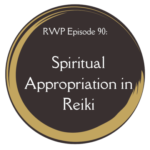
Spiritual Appropriation in Reiki with Reiki Women Podcasts
June 18, 2023
Challenges to Women’s Leadership in Reiki with Reiki Women Podcasts
July 9, 2023I love to cook and one of the elements that I find quite mystical in this alchemical process is the use of seeds. Among the many regional cuisines that captivate my taste buds, Indian food stands out as a favourite. In fact, it was my deep appreciation for Indian cooking that sparked a two-year adventure in India itself and my consequent entry into the system of Reiki. The seeds may be left whole or blended by pounding their essences together to create magical, unique flavours. These seeds are not just used for their flavour, however, but also for their healing properties.
I recall being told that modern-day papadums, a popular Indian snack eaten with meals, are no longer of dietary value as they lack the inclusion of fenugreek seeds. Traditionally, these seeds are toasted or briefly fried in oil to unlock their captivating flavours before being incorporated into the pappadum dough. The addition of fenugreek seeds not only enhances the taste and aroma of the papadums, but also brings a host of additional benefits including their potential to alleviate digestive ailments, including heartburn, upset stomach, indigestion, and flatulence. It all makes so much sense – or did. Most papadums today are seedless, keeping the crunch but not the wisdom.
This reminds me that there is immense wisdom contained within the ingredients nature offers us.
Seeds, for example, are healing in more ways than one. They can even be a captivating gateway into understanding more about ourselves. A seed is not just a mere object; it embodies a tremendous potential for growth and transformation.
Travelling back in time, the use of ancient Sanskrit seed syllables in India holds profound significance. Known as “Beejaksharas,” these sacred syllables rooted in ancient Sanskrit texts and practices, when drawn and spoken were, and still are, revered as potent vehicles of divine energy and transformation. Chanting or meditating upon these syllables invokes and aligns oneself with divine qualities facilitating spiritual growth and awakening. Just as a seed contains the blueprint of a majestic tree within its core, these seed syllables encapsulate the essence of the divine.
The seed as a spiritual metaphor exists within the system of Reiki and can also be traced back through millennia. It is believed that Mikao Usui, the founder of the system of Reiki worked with ancient seed syllable practices from the Japanese practices of Shingon Buddhism, Shugendo and Shintoism.
Seed syllables play a crucial role in the practice of Shingon Buddhism. The Shingon tradition emphasizes the use of mantra and visualization as means of attaining enlightenment. Seed syllables, called Kaji, are associated with specific deities or Buddhas and are used as focal points for meditation and concentration. The second symbol in the system of Reiki, for example, can be traced back to the Sanskrit seed syllable of hrih. This represents the potency of Amitabha Buddha, the Buddha of Compassion. In Japanese Buddhism, Amitabha is represented by Amida Nyorai. By chanting and visualizing these syllables, practitioners aim to awaken and embody the divine qualities represented by each seed syllable.
In Shugendo, chanting serves multiple purposes. It can be used to focus the mind, invoke spiritual energies, cultivate concentration, and connect with the divine. Chants are often recited in a rhythmic manner, with specific syllables and sounds believed to hold spiritual significance and power. The syllables and intonations are said to have transformative effects on the practitioner’s mind, body, and breath.
In Japanese Shintoism, the indigenous folk religion of Japan, seed syllables known as Kotodama hold significance. Kotodama refers to the belief that words and sounds possess spiritual power and can influence the world around us. This concept of seed potential expands to encompass the notion that human beings have the capacity to evolve into divine beings known as Kami. Within each of us resides the seed or essence of Kami, waiting to be nurtured and cultivated. By tending to this inner seed, we can facilitate its growth, leading us towards the realization of our divine nature. This process can be likened to the unfolding of the “spiritual light of Kami” dwelling deep within the core of our humanity. The Kotodama of Symbol 1 in the system of Reiki can be translated to mean “go to kami – go to your essence”.
Just as a seed requires care, nourishment, and the right conditions to sprout and flourish, our spiritual essence yearns for attention and cultivation. By recognizing and embracing the potential that resides within us, we cultivate our inner seed, gradually aligning ourselves with the divine qualities and energies of the Kami. This alignment not only enriches our spiritual lives but also enables us to radiate the light and wisdom of the Kami to the world around us.
I believe this essence serves as a testament to the fundamental goodness that resides within each of us. It affirms that beneath the layers of experiences, conditioning, and external influences, there exists a pure and untarnished essence that embodies goodness.
Embracing this concept invites us to view ourselves and others through a lens of compassion, empathy, and acceptance. It reminds us that despite our flaws and imperfections, there is a deep well of goodness that forms the foundation of our being.
When we acknowledge and honour this inherent goodness, it influences the way we interact with ourselves and the world around us. It encourages us to cultivate kindness, understanding, and love, both for ourselves and for others.
So how do we practice this?
Within the depths of our belly lies the Hara, the home of our original energy, akin to a culinary wok. Season the wok with some beautiful deep breaths using the practice of Okinagaho. Just as a wok skillfully cooks ingredients, the Hara gently toasts the seed syllables of our spiritual practice. As we engage in this transformative process, the heat intensifies, gradually releasing the flavours of compassion and wisdom. Like a master chef, we nurture our spiritual growth with this dedicated practice. This is where we incorporate the seeds’ blessings into our lives, the pappadum dough, and we allow them to blend together and cook into the perfect delicious crunch. Through this alchemical process, we unlock the true essence of kami.
The 7 Serenities, the 7-day relaxation and visualisation practice that I have developed, gives me the opportunity to use syllables, formed into words, that in special structures help our minds to understand deeply who we are. This method lets us relax and let go and allow the magic to happen inside ourselves. At the same time, the visual metaphor of a seed brings us to a place inside that very rarely sees the light. Take this practice and let your Kami essence free to express the world of deep goodness that lives within.






